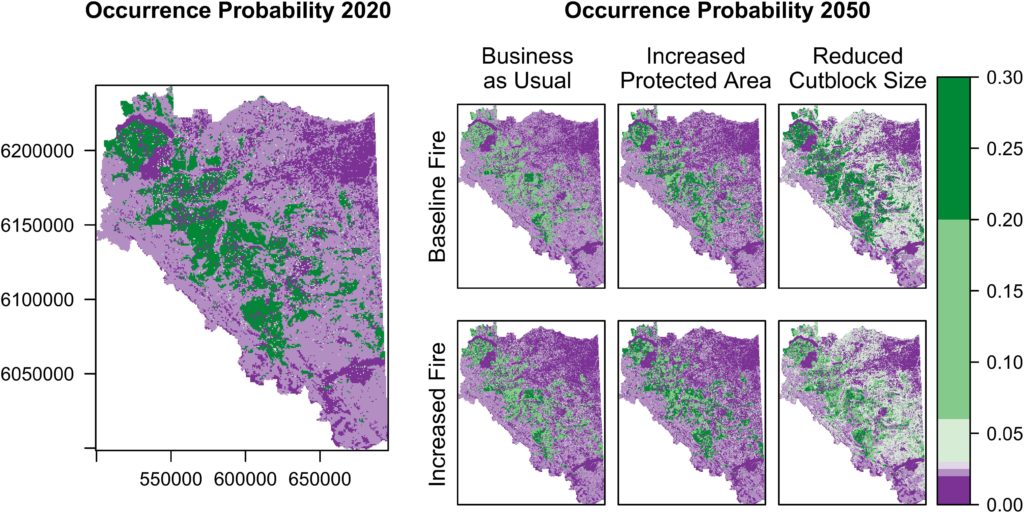
A new article published in the journal Frontiers in Ecology and Evolution describes the development of a landscape simulation model to forecast the cumulative effects of multiple stressors on the habitat of the Olive-sided Flycatcher. This simulation model, developed by scientists at Environment and Climate Change Canada and ApexRMS with the ST-Sim package for SyncroSim, was used in combination with point count data and statistical habitat models to predict habitat over a thirty-year period under six scenarios varying conservation policy and fire regimes. Results of this study showed that increasing protected areas from 13% to 30% of the land base to meet Canada’s 30 by 30 goals will benefit habitat for Olive-sided Flycatcher. However, land management policy changes are also needed outside of protected areas to improve future habitat for this species. Management scenarios that reduced the maximum size of cutblocks resulted in the largest improvement to future habitat. The study also found that increases in the frequency of wildfire because of climate change will likely result in overall decreases to habitat regardless of which land management scenario is considered.
